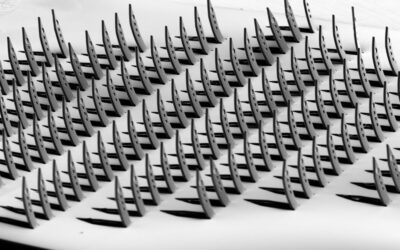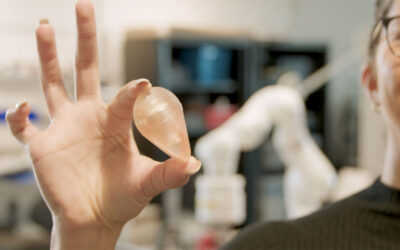As an alternative to obtaining organs or tissue grafts from live donors, tissue-engineered constructs are emerging as a potential solution for organ replacement or tissue repair. Through a combination of biomaterial scaffolds, bioactive factors, and/or living cells, these constructs can be designed to impart specific physical and biochemical signals to regulate cell behavior and ultimately guide the formation of new functional tissue. Such signals as they occur in nature are sometimes presented in spatially defined patterns such as gradients, and therefore, incorporating gradients of biomolecules into biomaterial scaffolds may be desirable for complex tissue engineering applications.
One bioactive factor that has recently become studied for use in tissue engineering and regenerative medicine applications is short interfering RNA (siRNA), which silences gene expression by cleaving specific messenger RNA molecules post-transcriptionally. siRNA has the capacity to control cell behavior at the level of gene expression in a way that evokes aspects of natural development, and by spatially controlling its presentation, it may be a promising candidate for spatially regulating cell phenotype and tissue properties in engineered tissues.
To investigate this, Hill et al. have developed a hydrogel system containing a spatial gradient of siRNA and studied its effects on encapsulated cells. Two programmable syringe pumps were used to eject solutions of a photocrosslinkable polysaccharide with and without siRNA into a customized mixing unit to form a gradient. To facilitate cellular uptake, the siRNA was complexed with a positively charged polymer.
The researchers demonstrated that this technique could successfully incorporate gradients of siRNA complexes, and showed that these complexes were retained by the hydrogel over time. Furthermore, by encapsulating cells expressing green fluorescent protein (GFP) into hydrogels containing gradients of siRNA targeting GFP, they found that the siRNA gradient hydrogel was capable of eliciting differential protein expression that could be sustained over time.
This simple and inexpensive technique could be readily extended to different cell types and physiologically relevant siRNA, and can be tailored to different tissue engineering applications by adjusting the hydrogel composition or syringe pump parameters. This is the first demonstration of a continuous gradient of siRNA implemented into a three-dimensional hydrogel scaffold, and based on these findings, it is anticipated that siRNA may become a useful tool for achieving gradients of cell function and engineering tissue properties to aid in the regeneration of complex tissues.
















